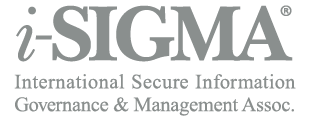Providing compliance to clients is the key to getting new ones
May 8, 2014
I was recently reminded of one of my favorite Peter Drucker quotes, “Culture eats strategy for breakfast.” It’s a great way of expressing the idea that all the strategic planning in the world is of no value to an organization if its corporate culture doesn’t support it.
The secure destruction industry, both electronic and hard copy, does a lot of talking, writing, and strategizing related to security and compliance. Unfortunately, too often, the positioning of those efforts is not reflected in their company’s DNA. In fact, a stranger looking at our industry from an operational perspective by examining where management focuses its efforts, would see cultures that reflect the importance of efficiency and recycling (or byproduct revenue). Sure, there are exceptions, but as a rule, secure destruction operations do not seem use their or the client’s compliance and security as the focal point of their culture.
First, efficiency and byproduct revenue are very important and worthy of attention, in fact, they are critical. We miss the boat when we make them the centerpiece of the corporate culture. It makes no sense to build a strategy based on being customers’ security and compliance partners if the corporate culture is not aligned properly.
A small but significant percentage of NAID members are experiencing great success by using a combination of the Compliance Toolkit, the Customer Employee Training Program and Downstream Data Coverage. The question then becomes: If some members are experience this success, what’s stopping the majority of members from doing the same thing? This brings me back to Drucker’s observation on the role of culture. Where the culture stresses efficiency and byproduct revenue, honing the knowledge or investing in the skills necessary to become a value-added compliance partner does not align. The “culture eats the strategy for breakfast.”
In speaking with members who have experienced success using NAID compliance tools, they all share one thing in common: they use these tools to help their existing customers before they try to use them to develop new business. In doing so, they solidify those relationships and get valuable practice in a low-risk settings, practice that gives them the confidence to attract opportunities with prospective customers. Let’s face it, if the sales representative lacks confidence in his/her ability to use these tool or talk the language of compliance, he/she will not attract such opportunities and might avoid them. It’s just human nature.
Using these tools with existing clients also leads to the company to new opportunities through testimonials and referrals. And, most important of all, the company now has a professional responsibility to the client. If the Customer Employee Training Program makes them bulletproof to the maximum consequences of a breach, how can a service provider justify not making it available to customers? It is a real value with tangible benefits and it required by law. It is trite to say that customers are the biggest asset of your business, but it is not just because they pay the bills. They are the single biggest conduit to new business. Using NAID’s compliance tools is one of the best ways to turn on that faucet.

